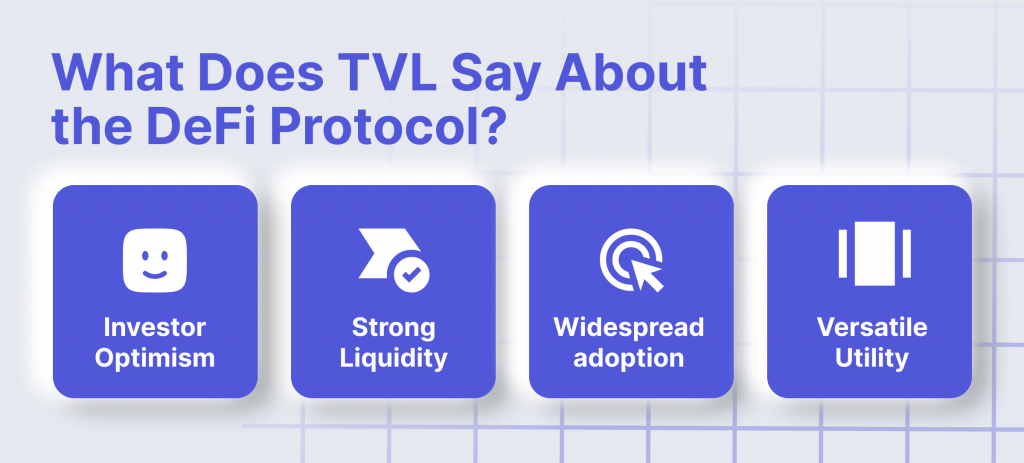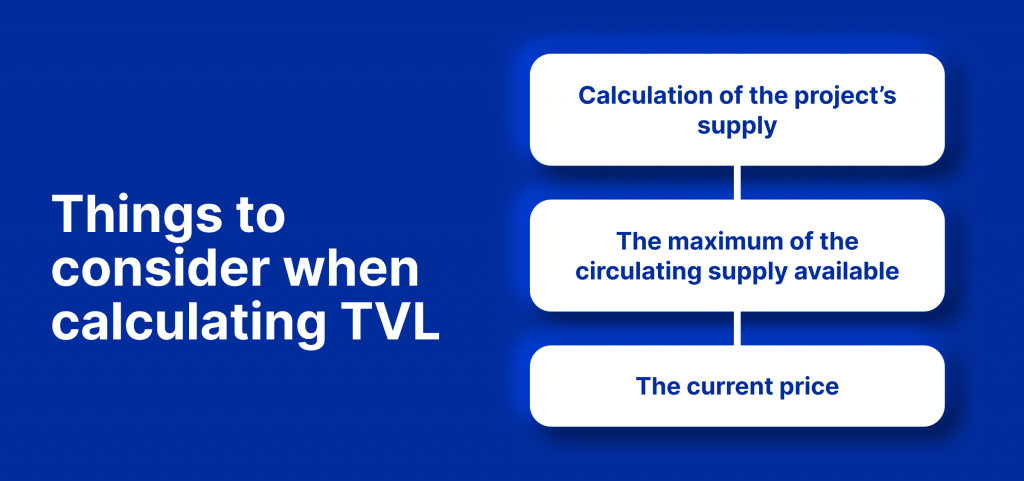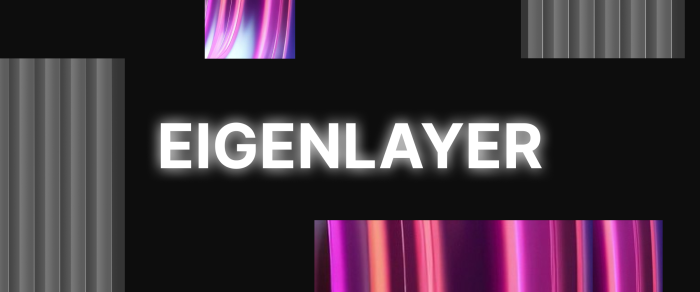Total Value Locked (TVL) In Crypto: Explained
Cryptocurrency investing is a complex market that requires careful research and analysis of multiple factors, not just the price. Market performance, trading volume, market capitalization, token supply, tokenomics, and most importantly the total value locked all serve as key guides in the treacherous terrain of cryptocurrencies.
Total value locked, or TVL for short, is a crucial metric since it provides insight into a project’s future performance and reveals crucial information about its fundamental value. This article aims to cast light on the concept of TVL in the DeFi ecosystem, presenting crucial insights that every crypto investor should know.
Key Takeaways
- TVL is the total amount of cryptocurrency that is sealed within a smart contract.
- In DeFi, the TVL is a crucial indicator of the success, popularity, and use of a project.
- TVL reflects project success, while market cap indicates investors’ confidence.
- TVL has limitations, such as inaccuracies, external influences, and inflated values, so it must be evaluated alongside other metrics.
Fundamentals of Total Value Locked
Total value locked, or TVL, is a crucial metric in the cryptocurrency industry, serving as an indication of a platform’s worth. In the same way that individual assets have their own market values, the total value of all the assets and projects that make up a certain platform may be calculated by adding their individual values together.
In the cryptocurrency industry, the total value of all linked projects and investments is used to represent the value of a blockchain network as a whole. While the US dollar is the standard for measuring TVL, other fiat currencies can be converted for your convenience.
A wide variety of crypto assets have evolved since the emergence of DeFi protocols, which aim to address the limits of centralized finance. In cryptocurrency parlance, the TVL refers to the immediate aggregate worth of these projects minus any outstanding loans and yields.
The DeFi industry’s TVL increased dramatically to $51.1 billion this year, from just $2 billion the previous year. Because of this meteoric rise, TVL is now a crucial indicator for investors attempting to assess the health and investment potential of an entire ecosystem or particular protocol, reflecting the growing importance and popularity of DeFi within the crypto realm.
There are underlying elements that could alter the value of DeFi projects, despite the seeming simplicity of TVL. The value of TVL is affected by a number of factors, such as the quantity held in a protocol, the amount deposited, and the amount withdrawn.
Changes in the value of the TVL’s underlying fiat currency or native token are possible. If a protocol accepts deposits only in the native token used by the project, then the TVL may rise and fall in tandem with the value of the token. Therefore, an increase in the value of a particular token can boost the TVL of the protocol as a whole.

Why Should You Matter For TVL?
When evaluating the DeFi market, TVL is essential. As a multidimensional statistic, it is extremely helpful for gauging both the state of the DeFi space as a whole and the prospects of specific initiatives within that market.
TVL measures the total value of all assets locked into DeFi protocols. Therefore, at the level of individual projects, TVL can be seen as an indicator of investor optimism. A rapid increase in a project’s TVL may be taken as evidence that financiers find value in the enterprise, as measured by a greater infusion of funds into the system. Investors must have access to this data in order to assess the viability of a protocol and its possible ROI.
A high TVL in the DeFi protocol space is indicative of strong liquidity, widespread adoption, and versatile utility. These characteristics are essential for any DeFi protocol to function properly, and their presence is generally correlated with greater investment rewards. Investors might expect better profits and increased liquidity as TVL rises.
A smaller TVL, on the other hand, suggests a tighter budget. Investors that stake the token linked with such a protocol may not benefit greatly from the smaller capital pool.
The capacity of TVL to assist investors in determining if the native token of a certain protocol is undervalued or overvalued is another interesting use case. Potential value discrepancies can also be uncovered by contrasting the token’s market cap with the TVL of the entire project or protocol. Tokens that are overpriced may have a high market cap relative to the TVL, while tokens that are undervalued may have a low market cap relative to the TVL.
Overall, TVL provides a 360-degree view of the DeFi market and its components, making it an essential resource for investors.
What’s The Difference Between TVL and Market Cap?
In DeFi, it is usual practice to compare Total Value Locked (TVL) and Market Capitalization (Market Cap). Both measures are helpful, but they do different things. The size of a DeFi protocol’s market cap indicates the level of support it has received from both active and passive investors. Passive investors invest in a platform with the hope of receiving a return at a later date. TVL, on the other hand, displays a project’s success in the DeFi ecosystem, providing a more reliable estimate of the platform’s attractiveness to investors.
Simply, the market capitalization of a project benefits from passive investors who buy tokens and wait for the price to rise before selling. In contrast, the TVL shows how robust and popular a particular DeFi platform is among its consumers. TVL is a measure of a project’s current status, providing insights into its health and feasibility in the current market, while market cap is considered a key indicator for measuring the future potential of a DeFi protocol.

How Is TVL Calculated?
Given the steady stream of new DeFi protocols entering the market, calculating TVL can be difficult. Potential consumers may have trouble determining an accurate approximation of the market-wide locked value. It may also be difficult to ascertain whether DeFi protocol is the most secure option in any specific scenario.
Users can, however, begin with popular protocols that have a TVL of about $1 billion. Higher TVL indicates greater interest in the DeFi protocol, more compelling use cases, and a more capable development group. In contrast, larger yields from DeFi initiatives with lower TVL should raise suspicions that the projects are actually promotional schemes by new platforms trying to win over investors’ confidence and business.
There are three main considerations when establishing a protocol’s TVL:
- Currently available protocol supply
- The maximum supply in circulation
- Current pricing
First, you need to determine the market capitalization of the DeFi project by multiplying the supply of the project by its current price. To get the TVL, divide the market cap by the total number of coins that can ever be in circulation for the protocol. Finally, the TVL ratio is easily calculated by dividing the overall market capitalization of a locked asset by the TVL estimate.
TVL = Market Cap / Circulating Supply
If an investor wants to know if a specific DeFi asset is overvalued or undervalued, the TVL ratio is a crucial statistic to look at. Below a value of 1, an asset may be underpriced and a better investment option. When the market value of an asset is higher than its theoretical worth in use, it may be overvalued. To sum up, investors can benefit from learning how to calculate TVL and the significance of doing so in estimating the value of DeFi projects.
How Reliable is TVL As A Metric?
While TVL is a useful metric for evaluating DeFi protocols, it is not a flawless metric and investors should be aware of its limitations.
The TVL can be manipulated by single deposits or withdrawals from wealthy investors (termed “whales”), which might give an incorrect picture of the project’s health and activity to other investors.
Further, whales may encourage enthusiasm about a project by making big contributions, making it difficult for future investors to evaluate the project’s sustainability.
Another shortcoming of TVL is that it does not take into account user engagement when calculating the total value of assets locked or staked in a platform. For investors, it’s a negative indicator if a platform has a high TVL but few users. A high TVL does not guarantee a good quality or secure platform either. Before putting money on a platform, investors should research its legitimacy and safety measures.
Changes in TVL might not be representative of a project’s overall health or future viability. TVL can be impacted by extraneous variables including market circumstances, media attention, investor mood, and the introduction of new protocols or DApps. Therefore, investors should look at more than just short-term performance when determining a project’s viability.
Investors investigating TVL should also think about how often the analytics platforms are updated to make sure they are using the most recent data. It is also difficult for investors to effectively judge a platform’s popularity and usage based on TVL alone since TVL can be fraudulently boosted by bad actors seeking to bring greater attention to a particular platform or initiative.
Overall, to make informed investment decisions, investors must perform their due diligence by investigating a platform’s governance model, token economics, community strength, liquidity pool depth, yield farming policies, and security protocols. Investment decisions shouldn’t be based just on TVL, but rather on a combination of TVL and other indicators of a project’s viability.

Top 3 Cryptos With The Highest TVL
Total Value Locked (TVL) is a measure of how confident investors are in a cryptocurrency’s performance, governance, and security. A high TVL is usually indicative of a liquid, well-liked, and widely-used trading platform.
A high TVL might also mean that the platform has useful use cases, has solid development and governance teams, and is prepared for future expansion. In addition, a high TVL helps reassure investors that their money is secure on the platform, which is especially important in the Decentralized Finance industry, where security threats and fraud are rampant.
Here are the top 3 crypto assets with the highest TVLs according to Tradingview.
- Lido DAO ($12 Billion)
In the DeFi industry, Lido DAO has the largest Total Value Locked (TVL), with a whopping $12 billion locked. Users may stake their Ether (ETH) and receive rewards without risking their liquidity on the Lido DAO’s trustless and decentralized staking platform. Investors’ confidence in the safety and reliability of the Lido DAO is reflected in the platform’s high TVL.
The success of Lido DAO can be traced back to its user-friendly and effective staking procedure, which, in addition to providing attractive rewards, also helps to keep the network secure. Lido DAO is quickly becoming the go-to solution for investors seeking secure and profitable staking possibilities because of its high TVL and rising popularity.
- Aave ($8 Billion)
Another DeFi platform with a significant TVL is Aave, which is worth over $8 billion right now. Aave is a cryptocurrency collateral lending platform where users may earn interest on their cryptocurrency holdings. Aave is favored by DeFi investors due to its wide selection of supported cryptocurrencies, user-friendly interface, and reasonable interest rates.
Investors’ faith in Aave’s safety, transparency, and potential success is reflected in the platform’s high TVL. As a result of its popularity and rapid growth, Aave has become the most often used DeFi protocol for loans.
- Maker ($7 Billion)
Maker’s TVL is $7 billion, and it’s a DeFi platform letting users create the stablecoin Dai. Dai stablecoin, which can be used in several DeFi services, is minted on the platform when users deposit cryptocurrencies like ETH as collateral.
Investor confidence in Maker’s long-term viability, security, and governance approach is reflected in the platform’s high TVL. Dai, a stablecoin known for its minimal volatility, has gained considerable traction among DeFi holders. Maker has been a frontrunner in the market because of its rising popularity and high TVL.
Final Takeaway
Clearly, TVL has become an essential indicator of DeFi protocols’ success, popularity, and future potential. While market capitalization is significant, TVL is a more accurate indicator of a project’s health and investors’ usability. TVL gives investors an accurate picture of the near-term prospects of a DeFi protocol and helps them choose secure, lucrative investments.
As the DeFi ecosystem continues to develop, TVL will likely become an even more important criterion for evaluating the efficacy and promise of both new and established DeFi protocols. Therefore, it is essential for investors to grasp TVL’s function within the decentralized financial system as a whole.



